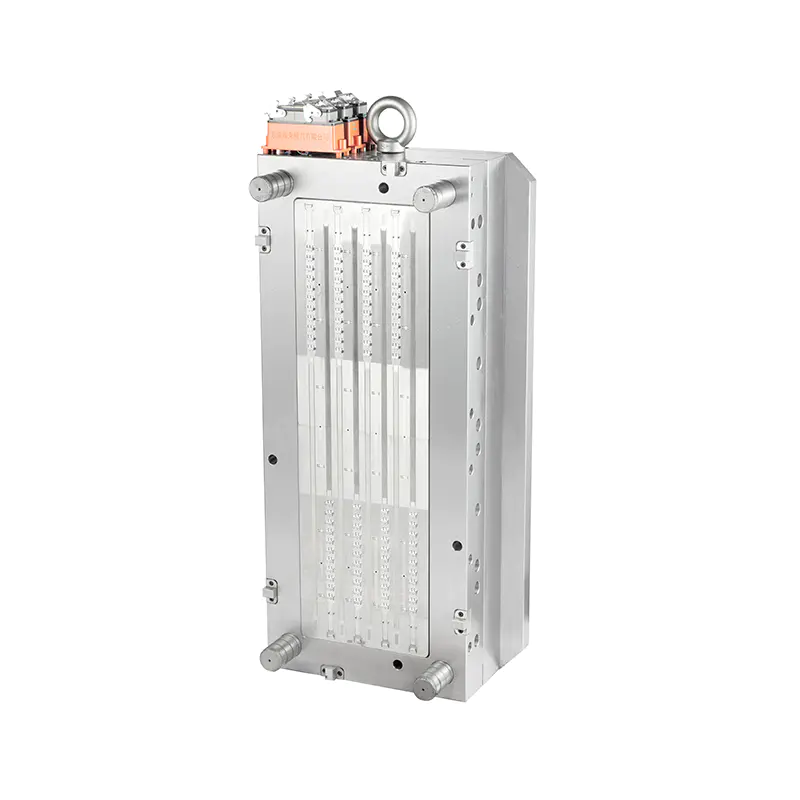 2025.08.15
2025.08.15
 News
News
The aspect to consider when discussing the PP seal cable tie mold is the material selection for the mold itself. Molds are subjected to high pressure and temperature during the injection molding process, and they must resist wear, deformation, and corrosion over time. Commonly, molds for PP cable ties are made from high-grade tool steels such as H13 or P20. H13 steel is favored for its toughness, thermal fatigue resistance, and ability to withstand repeated thermal cycles without cracking. This makes it a reliable choice for the core components of the PP seal cable tie mold that directly contact molten polypropylene.

P20 steel, on the other hand, is often used for mold bases or less critical components. It offers good machinability and decent hardness after heat treatment, which helps keep manufacturing costs manageable. In some cases, stainless steel may be used for parts of the PP seal cable tie mold exposed to corrosive environments or when higher surface finish standards are required. However, stainless steel is less common due to its higher cost and machining difficulty.
Besides steel, certain molds incorporate surface treatments or coatings to improve performance. For instance, nitriding or chrome plating can be applied to the cavity surfaces of the PP seal cable tie mold. These treatments increase surface hardness and wear resistance, reducing the risk of scratches or deformation during production. Enhanced surface durability helps maintain the mold's dimensional accuracy and the quality of the produced cable ties over extended runs.
The design of the PP seal cable tie mold is another critical consideration. The mold must include precisely engineered cavities that define the shape and size of the cable tie, including the sealing head and locking mechanism. Accurate cavity design ensures proper locking function and tensile strength of the final product. The mold should also allow for uniform filling and cooling of the molten PP material, avoiding defects such as warping, sink marks, or incomplete fills.
In terms of processing, injection molding is the standard technique used with the PP seal cable tie mold. Polypropylene pellets are heated until molten and injected under high pressure into the mold cavities. The choice of processing parameters—including injection speed, pressure, temperature, and cooling time—affects the surface finish, mechanical properties, and dimensional accuracy of the cable ties. The mold must be designed to facilitate efficient heat transfer, often incorporating cooling channels to accelerate solidification and maintain cycle times.
Maintaining consistent processing conditions is essential because PP is sensitive to temperature variations and shear stress. Overheating or prolonged exposure to high temperatures can degrade polypropylene, reducing the strength and flexibility of the cable ties. Thus, the PP seal cable tie mold must be capable of withstanding these conditions without losing precision or suffering damage.
The mold's venting system also plays a significant role in processing. Proper venting allows trapped air and gases to escape during injection, preventing defects like burn marks or bubbles in the finished cable ties. Well-designed vents ensure clean filling and reduce the risk of mold damage due to pressure build-up.
Another processing aspect linked to the PP seal cable tie mold is the ejection system. After cooling, the molded cable tie must be ejected smoothly without distortion or damage. Ejector pins or plates are precisely positioned to push the part out of the mold cavity. The mold must balance sufficient ejection force with gentle handling to avoid scratching or deforming the delicate locking features on the cable ties.
The production volume also influences material and processing decisions for the PP seal cable tie mold. High-volume production runs require molds made from durable materials with robust cooling and ejection systems to maintain long-term stability and reduce downtime for maintenance. For smaller production runs or prototypes, molds may be made from less expensive materials or use modular designs to allow quick changes and lower initial costs.